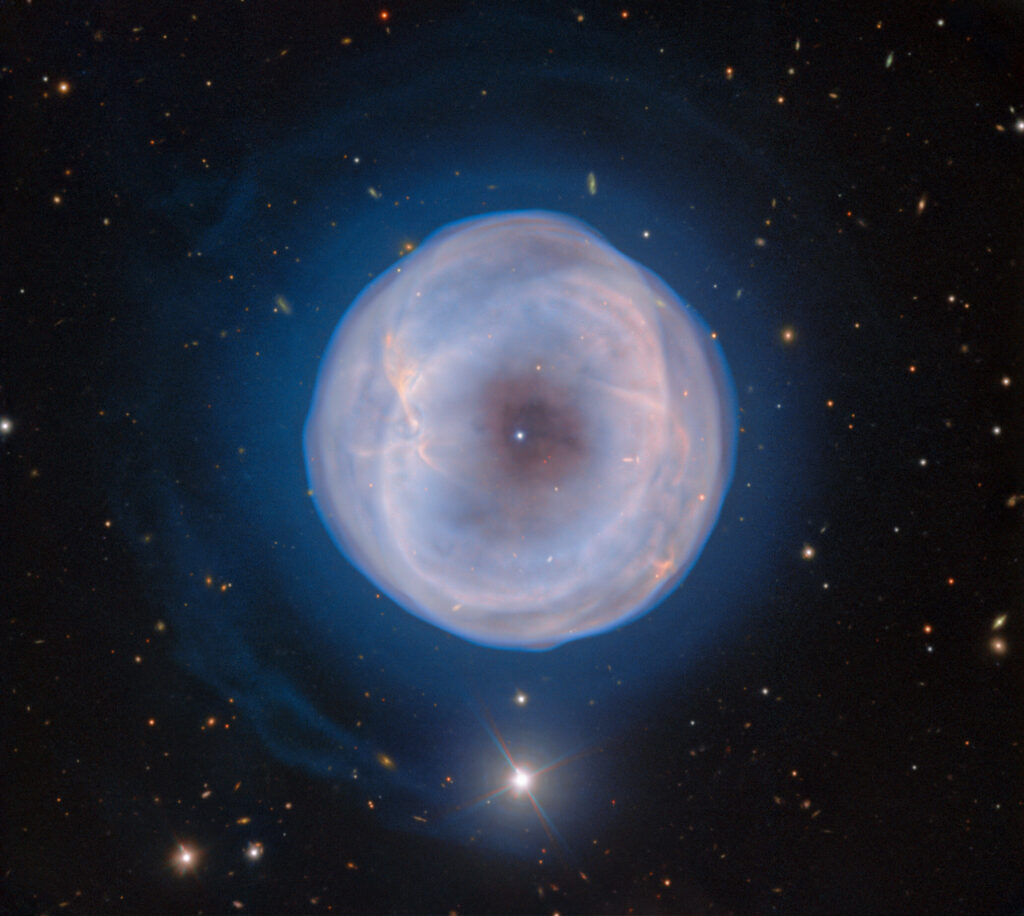The NOIRLab Research Center published a very spectacular image obtained by the Gemini South telescope. It shows the IC 5148 nebula, also known by the unofficial nickname Spare Tyre.

IC 5148 is located at a distance of about 3 thousand light-years from Earth in the direction of the constellation Grus. It is a planetary nebula — a gas cloud, inside which there is a stellar remnant. IC 5148 is one of the most rapidly expanding planetary nebulae. It increases at a speed of 50 km/s.
Despite their name, planetary nebulae have nothing to do with planets. Such objects represent the final phase of the life cycle of sun-like stars. They are formed when the luminary, which has turned into a red giant, begins to discharge the outer layers of the atmosphere into the surrounding space. The radiation of the exposed core ionizes the dropped shell, causing it to glow. This stage is called the planetary nebula.
IC 5148 is no exception to the rule. In its center is a white dwarf, the hot core of a deceased luminary. It was once a star with a mass close to that of our Sun. It is surrounded by asymmetric gaseous “colors” and a faint halo ring. You can pay attention to the dark spot directly around the stellar remnant. This is a vacant space. It arose because the radiation of the luminary pushed the gas away from the core.
According to the researchers, the gas structures surrounding the white dwarf are a kind of annual rings in which the history of the evolution of this system is encoded. Their study may shed light on the past of IC 5148.
It is worth noting that the lifespan of planetary nebulae is usually several tens of thousands of years. By astronomical standards, it’s literally a couple of moments. Over time, the core of the star cools down so much that it ceases to emit enough ultraviolet light to ionize the gas envelope. As a result, the nebula becomes invisible. The core, however, turns into a white dwarf.
According to https://noirlab.edu
Follow us on Twitter to get the most interesting space news in time
https://twitter.com/ust_magazine
